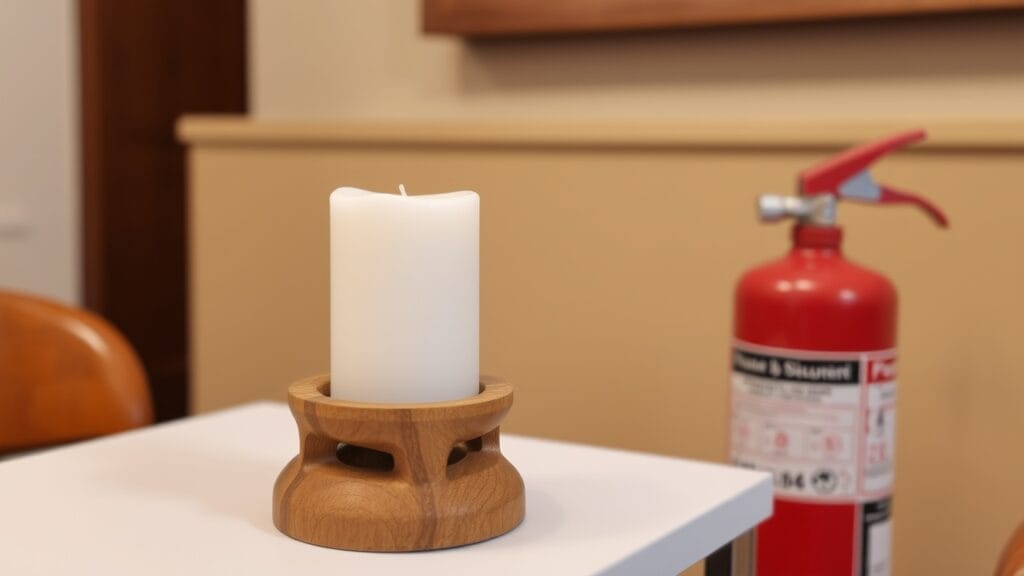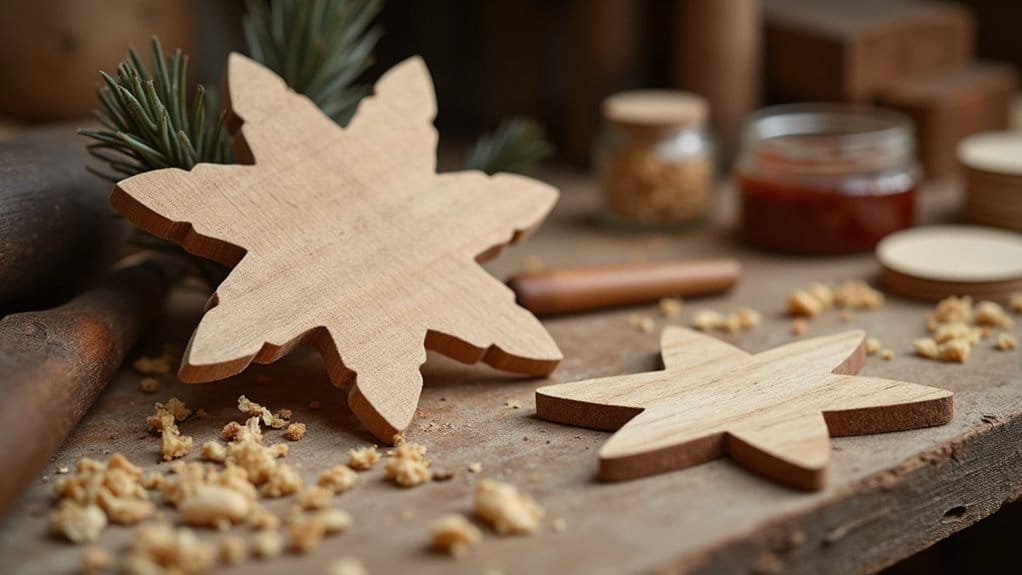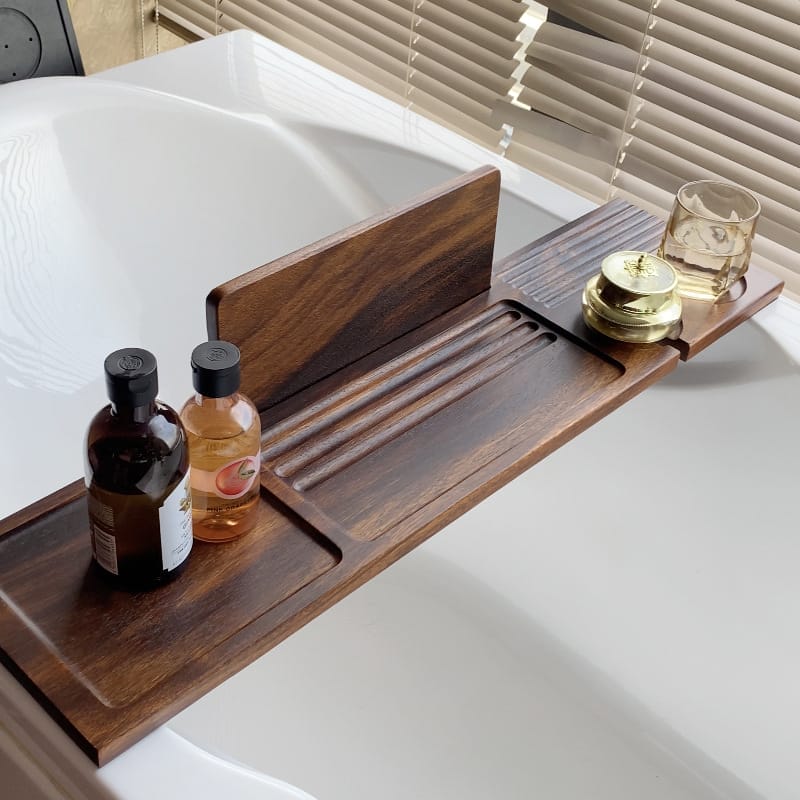You’ve probably heard conflicting advice about wooden cutting boards in your kitchen. While some claim they’re breeding grounds for bacteria, recent research suggests just the opposite. In fact, wood’s natural antimicrobial properties make it one of your safest options for food preparation. Before you decide which cutting board deserves a spot on your counter, let’s examine the evidence behind wood’s safety features and compare it with other popular materials.
Key Takeaways
- Wooden cutting boards are safer than plastic, with natural antimicrobial properties that kill bacteria within three minutes of contact.
- Hardwood boards made from maple or cherry provide superior food safety when treated with food-grade mineral oil finishes.
- Quality wooden boards should be crafted from single pieces of hardwood rather than glued segments for optimal safety.
- Regular cleaning and maintenance with non-toxic oils ensure wooden cutting boards remain hygienic and safe for food preparation.
- Using separate wooden boards for raw meat and other foods prevents cross-contamination and maintains kitchen safety.
Types of Cutting Boards

When selecting a cutting board for your kitchen, you’ll find that wood boards made from hard maple or cherry offer superior bacteria-killing properties and knife-edge preservation.
Bamboo boards provide an eco-friendly alternative that’s naturally resistant to microorganisms and requires less maintenance than traditional wood.
While other materials like glass, plastic, and marble each serve specific purposes, they come with notable drawbacks including knife dulling, bacterial retention, or the need for frequent replacement.
Wood Cutting Boards
Hardwood cutting boards stand as the gold standard for food preparation, offering both safety and durability in the kitchen.
You’ll find that wooden cutting boards, particularly those made from hardwoods like maple and cherry, naturally kill bacteria within minutes of contact. Unlike plastic alternatives, these non-toxic cutting boards won’t harbor harmful microorganisms on their surface.
To maintain your wood cutting board’s food safety properties, you’ll need to clean and sanitize it properly after each use.
Regular maintenance with food-grade mineral oil helps preserve the board’s durability and bacteria-fighting capabilities. Remember to replace your board if deep grooves develop, as these can compromise its safety features.
Bamboo Cutting Boards
Building on the tradition of wooden cutting boards, bamboo offers a modern alternative that’s gained significant popularity in recent years.
When choosing a bamboo cutting board, you’ll find it’s naturally more resistant to moisture and bacteria than traditional wooden cutting boards, making it a healthier, more sanitary choice for safe food preparation.
However, you’ll want to verify that your bamboo cutting board is responsibly manufactured without toxic adhesives. Look for boards made from solid pieces rather than compressed bamboo.
While maintenance is generally easier than wooden cutting boards, you’ll still need to oil the surface periodically and avoid prolonged water exposure to guarantee longevity.
Other Types of Cutting Boards
Beyond wood and bamboo, several other cutting board materials offer distinct advantages for specific kitchen tasks.
When selecting non-toxic alternatives, you’ll find various options to suit your needs:
- Glass boards are non-porous and easy to clean but can dull knives quickly.
- Composite boards provide durability and antimicrobial properties while being dishwasher-safe.
- Plastic boards, when BPA-free, work well for preventing cross-contamination through color-coding.
- Stainless steel offers excellent maintenance-free sanitation but requires frequent knife sharpening.
Consider keeping multiple board types in your kitchen, using each for its strengths while maintaining proper cleaning protocols. This approach guarantees peak food safety and cutting performance.
Are Wooden Cutting Boards Safe?

You’ll find that wooden cutting boards offer superior safety features compared to plastic, as studies show wood’s natural antimicrobial properties can kill bacteria within three minutes of exposure, while plastic boards harbor bacteria even after cleaning.
Quality wooden cutting boards made from hard rock maple or cherry provide a non-toxic, food-safe surface that won’t contaminate your ingredients with harmful chemicals or microplastics.
When selecting a wooden cutting board, look for those crafted from a single piece of hardwood and finished with food-grade mineral oil or beeswax to guarantee maximum safety and longevity.
Comparing Safety: Wood vs. Plastic
While plastic cutting boards have gained popularity in recent decades, scientific research actually favors wooden boards for food safety.
You’ll find that wood naturally kills bacteria within minutes, while plastic cutting boards can harbor harmful microorganisms even after thorough sanitization.
- Wood’s antimicrobial properties make it a safer choice for preventing cross-contamination
- Deep grooves in plastic boards become breeding grounds for bacteria, making them harder to clean effectively
- Wooden boards treated with non-toxic finishes provide a more hygienic surface for food preparation
- Proper maintenance of wooden boards, including regular oiling and careful cleaning, guarantees long-lasting food safety
Choose wood over plastic for a naturally safe cutting surface that won’t compromise your kitchen hygiene.
Features of Non-Toxic Wooden Cutting Boards
Since scientific research confirms their natural antimicrobial properties, wooden cutting boards stand as one of the safest food preparation surfaces available.
You’ll find that non-toxic hardwoods like maple offer superior knife preservation while remaining stain resistant and durable.
To maintain your wooden cutting boards, you’ll need to thoroughly clean them after each use and regularly treat them with food-grade oil.
When choosing a sustainable material for your kitchen, select boards crafted from single pieces of wood rather than glued segments.
With proper maintenance, these naturally antimicrobial surfaces will serve you safely for years.
Choosing the Right Cutting Board

When selecting a cutting board for your kitchen, you’ll need to weigh factors like material safety, knife preservation, and cross-contamination prevention.
Your choice between wood, bamboo, glass, or stainless steel will impact both food safety and maintenance requirements, with hardwoods like maple offering natural antibacterial properties while requiring regular oiling.
To maintain peak safety, inspect your board regularly for deep grooves that can harbor bacteria, sanitize it properly after each use, and replace it when wear becomes evident.
Factors to Consider
As you shop for a cutting board, several critical factors deserve careful consideration to guarantee both safety and functionality in your kitchen. Your choice should balance food safety, knife preservation, and practical maintenance requirements.
- Select non-toxic wood varieties like maple or cherry that naturally inhibit microorganism growth and won’t contaminate your food.
- Consider the board’s intended use – separate boards for raw meat help prevent cross-contamination.
- Evaluate your commitment to maintenance, as wooden boards require regular cleaning and oiling to remain safe and functional.
- Assess the board’s knife-friendliness, as proper cutting surfaces protect your knife’s edge while ensuring precise cuts.
Maintenance Tips for Safer Use
Proper maintenance of your cutting board plays an essential role in ensuring both food safety and longevity of the surface.
After each use, clean your wooden cutting boards thoroughly with hot water and mild soap, then sanitize them using a mixture of water and vinegar to eliminate bacteria. Make sure to dry the boards completely to prevent warping and cracking. If you’re unsure about how to clean cutting boards effectively, remember to periodically treat them with mineral oil to maintain their integrity. Regular maintenance will not only prolong their lifespan but also ensure food safety in your kitchen.
Apply food-grade oil monthly to prevent the wood from drying and cracking. Inspect your board regularly for deep grooves, which can harbor harmful microorganisms.
When you notice significant wear, it’s time to replace your board.
Frequently Asked Questions
How Long Can Bacteria Survive on Different Types of Cutting Boards?
You’ll find bacteria die within 3 minutes on wooden boards, but they can survive for days on plastic surfaces. Glass and stainless steel don’t harbor bacteria long if properly cleaned and sanitized.
Can Wooden Cutting Boards Be Safely Used in a Commercial Kitchen?
Yes, you can safely use wooden cutting boards in commercial kitchens if they’re NSF certified. You’ll need to properly maintain them with food-grade oil and follow strict sanitization protocols between uses to meet health codes.
What’s the Safest Method to Remove Mold From Wooden Cutting Boards?
Don’t use moldy cutting boards – they’re unsafe and should be discarded. If you notice early mold, scrub with coarse salt and lemon juice, then sanitize with diluted bleach solution (1-2 tsp/quart water).
Do Different Wood Species Have Varying Antimicrobial Properties for Cutting Boards?
Yes, wood species vary in antimicrobial effectiveness. You’ll find hardwoods like maple and oak have stronger natural antibacterial properties than softer woods, while bamboo’s density and natural compounds make it particularly resistant to microorganisms.
How Often Should Mineral Oil Be Applied to Maintain Wooden Cutting Boards?
You’ll need to oil your wooden cutting board every 2-4 weeks with regular use. If the wood looks dry or feels rough, apply more frequently. New boards require 3-4 applications in the first month.
Conclusion
Wooden cutting boards aren’t just safe—they’re an excellent choice for your kitchen when you select and maintain them properly. You’ll find that hardwood boards, especially those made from maple or cherry, offer natural antimicrobial properties and superior durability. Remember to clean your board thoroughly after each use and apply food-grade mineral oil regularly. With proper care, you’re investing in a non-toxic, long-lasting kitchen essential that’ll protect both your knives and your health.







































